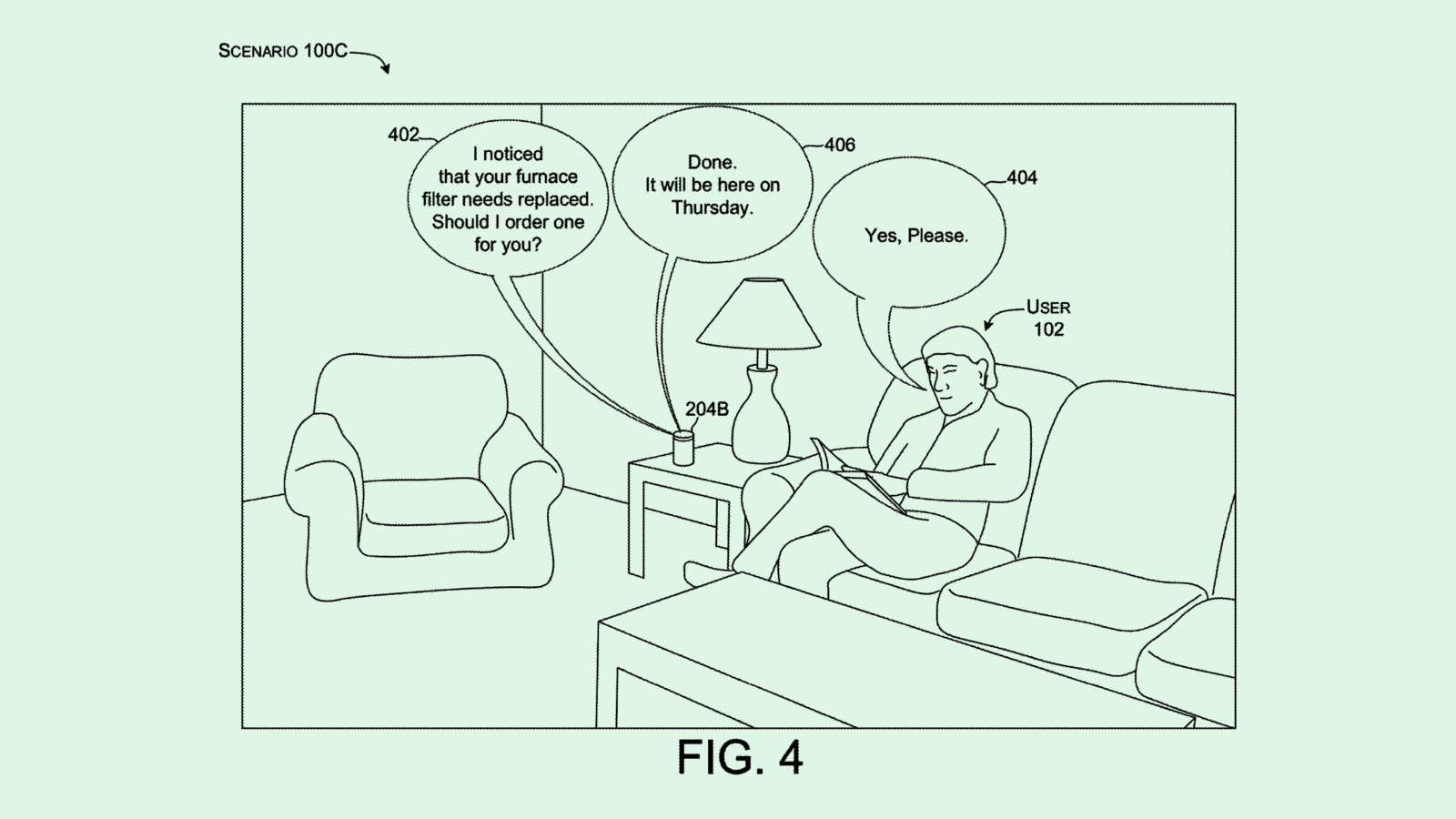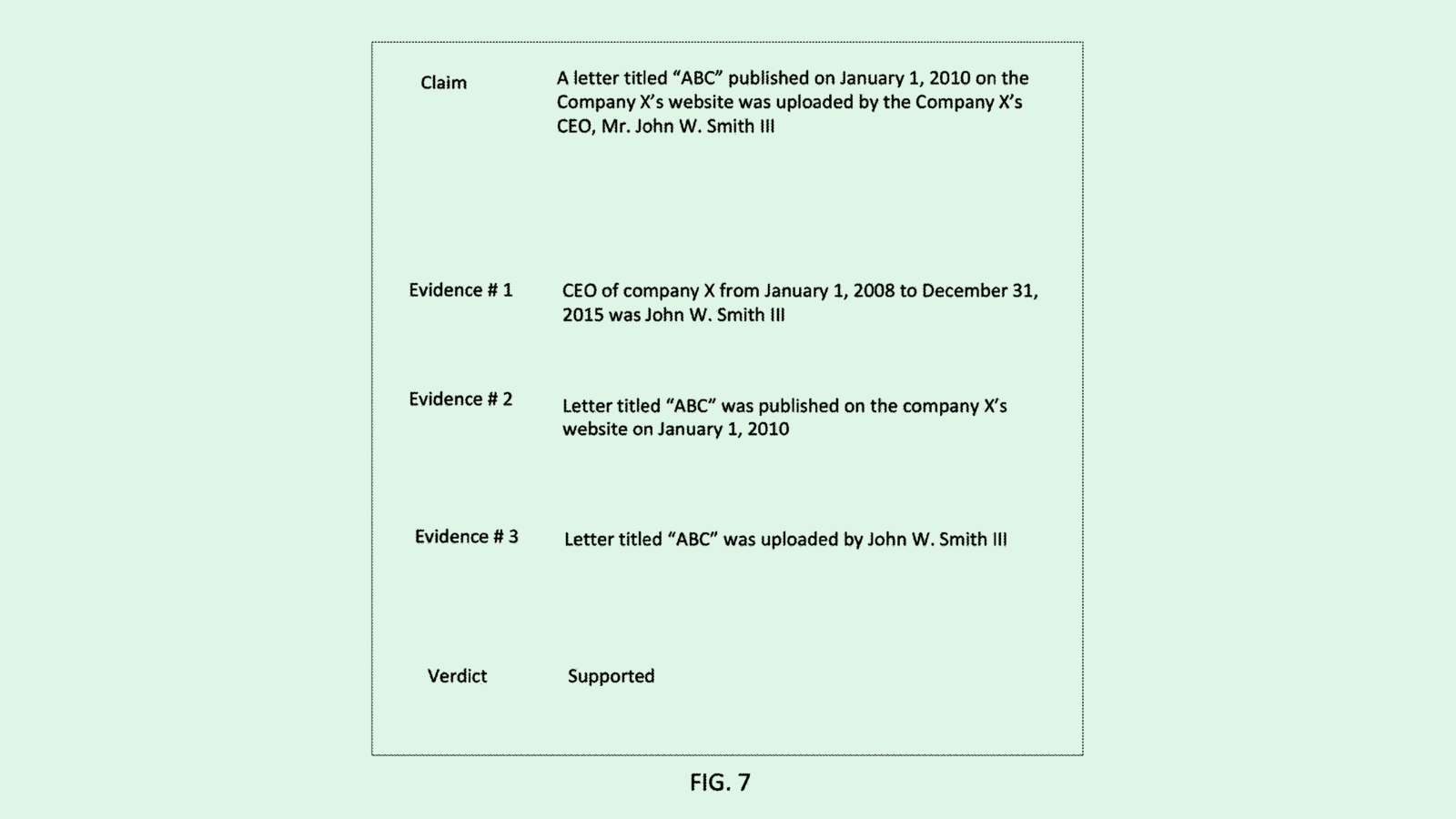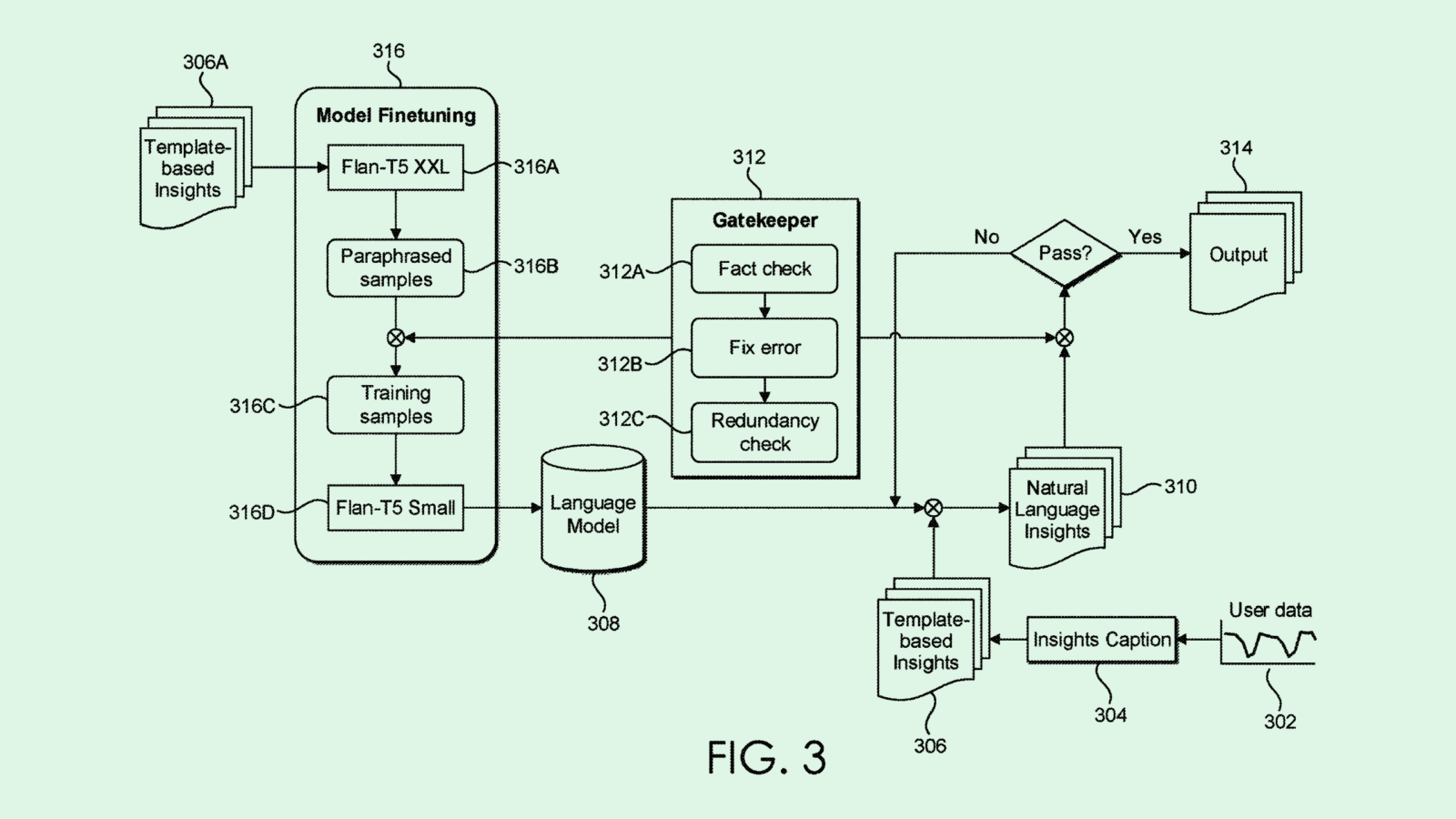Happy Monday and welcome to Patent Drop!
Microsoft wants to get up close and personal to make its search results better, highlighting the company’s lofty goal: for Bing to compete with Google. Plus: JPMorgan Chase wants to use blockchain for fact-checking, and Adobe wants to stop AI models from losing their trains of thought.
Let’s check it out.
Microsoft’s Personal Touch
Microsoft may want to make search results a little more personal.
The company filed a patent application for “IoT enhanced search results.” This essentially uses data from Internet of Things devices, such as smart appliances or wearables, to inform results of search queries.
“The user’s search query can be augmented with this IoT data to provide more relevant search results than are obtained in the traditional scenario,” Microsoft said in the filing. “Further, the more relevant search results can be obtained without any extra effort on the user’s part.”
Microsoft’s system would collect data from a variety of different IoT devices, such as thermostats, smart TVs, vehicles, refrigerators, and more, depending on what the user owns. This “can reflect the user’s interests, what he/she does, and/or what his/her choices are,” Microsoft said.
These devices are monitored and their data is stored into a “knowledge graph,” a type of structured database that’s used by a search engine to index and reference information. The additional data allows the search engine to better align results with a user’s wants and needs.
When a user is searching something, the system uses this knowledge graph to re-rank their search results based on up-to-date personalized data. For example, if a user searches “car repair shops near me,” and the system is collecting data from their vehicle, it may personalize the results to include repair shops that have the specific parts or services they need.

With the rapid onset of AI, the search engine market has been going through changes. While Google remains the dominant player, OpenAI launched its own search engine in recent months called ChatGPT search. Meta is also reportedly working on its own AI-powered search engine.
Microsoft, meanwhile, has sought to enhance its search engine Bing with AI since 2023. Its previous patent applications also spell out an interest in bringing generative AI capabilities to search. Though Google has its own AI search functions, the tech giant faced a massive antitrust blow in August after a court ruled that Google’s search engine dominance violates antitrust laws.
But is any of this enough for another player to emerge dominant against Google? While these efforts could help Bing “gain some ground,” it won’t be an easy feat for any other search engine to supplant Google, said Julie Geller, principal research director at Info-Tech Research Group.
The company controls roughly 90% of search engine market share, according to the Department of Justice, and has spent decades becoming so pervasive that it’s made itself a verb. “It’s one of those things that I just never think is going to go away,” said Geller.
However, as consumer tech moves from “reactive to anticipatory,” patents like these could give Microsoft an edge in the long term, she said. Its suggestion of using personalization as a means of making search more useful to users could give Bing a “strong differentiator” from the rest of the search market, said Geller.
“The natural integration of embedded search into everything that we do, it’s going to help take off that cognitive load,” said Geller. “To get enhanced search by integrating IoT data just makes it more contextually relevant.”
JPMorgan Chase Checks the Facts
JPMorgan Chase wants to set the record straight.
The financial institution filed a patent application for “fact verification using blockchain and machine learning technologies.” While blockchain is useful for verifying the integrity and origins of a document, “it is unable to verify if one of its claims is factually accurate,” JPMorgan said in the filing.
To amend this, JPMorgan will use machine learning to do the rest of the work. When a document is first submitted for verification, the system uses a natural language processing model to track down all of the “named entities” within it, such as people, places, or organizations, as well as their associated metadata.
The system then searches for previously authenticated documents that include those named entities. These authenticated documents are easy to trace using blockchain via their hashes (unique identifiers), serving as a reliable index to assist the model in fact-checking.
Then the system checks the presence and frequency of these named entities in previous documents to determine whether or not the new document’s text can be supported by previous claims.

While blockchain doesn’t have the ability to verify the validity of the content itself, AI models tend to go off the rails when not provided with proper data. Because of this, JPMorgan’s patent highlights the strengths and weaknesses of both blockchain and machine learning, and uses each technology to complement the other, said Jordan Gutt, Web 3.0 lead at The Glimpse Group.
“[Blockchain] has its core use cases of trust, tamper-proof, and scalability, but what that content is really has no bearing,” said Gutt.
It’s another example of the ways in which blockchain can be put to use outside of cryptocurrency — a concept that’s been explored by JPMorgan and other finance firms in the past, whether it be for financial audits, recordkeeping, or even “space-based” transactions. “The best use case for blockchain is when it’s not even visible to the end user,” said Gutt.
Though blockchain’s reputation has long been associated with cryptocurrencies’ volatility, the two have started “diverging” in recent years, said Gutt. As crypto has started to mature, so has the general public’s understanding of the technology. That could give more leeway for companies like JPMorgan to adopt it as a foundational technology.
“I think in 2021, people were shocked by the intense price action, and couldn’t differentiate blockchain from crypto,” he said. “But consumers are more educated now.”
So while crypto — particularly bitcoin — is currently seeing a rapid upswing following the election, its peaks and valleys have had less of an impact on blockchain as a whole. Instead, core blockchain technologies themselves are being adopted at a more gradual pace, said Gutt.
“They’re on two different trajectories. Crypto is one thing and core blockchain technology is another,” he said. “Blockchain has a clear, steady rate of adoption and crypto is super volatile.”
Adobe Spots Hallucination
Adobe wants to know when its models are off-base.
The company filed a patent application for “hallucination prevention for natural language insights.” Adobe’s tech aims to keep hallucinations from ending up in a language model’s output by ensuring responses actually contain facts.
Adobe’s system implements a “hallucination gatekeeper engine,” which puts an extra set of eyes on a generative AI model’s output.
“Hallucination generation by language models is a significant problem in conventional implementations as hallucinations can occur at a nontrivial error rate, thereby decreasing the reliability of conventional language models,” Adobe said in the filing.
Adobe’s tech would likely be put to use in an enterprise context, allowing the system to draw on “stored data regarding the business” as a means of “understanding of the reasons behind various data events, predicting future trends, and recommending possible actions for optimizing outcomes,” the filing notes.
After a user sends in a query, the system would draw on that stored data to generate what it calls “template-based insights,” which are then fed to a language model to be translated into natural language insights.
Finally, to ensure that nothing was lost in translation, the hallucination gatekeeper engine specifically checks that the facts, names, and numerical data mirror those in the template-based insights. If something is amiss, the system prompts the engine to regenerate the output.

Adobe isn’t the first tech firm that’s sought to find a solution to hallucination. Microsoft announced a tool in September called Correction, which attempts to catch and fix hallucination based on source material. Google unveiled a similar tool earlier this year called Vertex AI.
And it makes sense why Adobe would want to target hallucination — especially in enterprise contexts, as this patent suggests. The company’s AI-based creative tools largely target business and business use cases, and it claims that its generative model Firefly is safe for commercial use.
Its patent history tells a similar story, including AI data visualization, marketing campaign development, and generative image editing tools for professional use. When using AI tools in enterprise operations, it’s vital to ensure that users can actually trust the outputs.
Hallucination, however, is a natural part of any AI model. While it may be reduced with consistent monitoring and emerging techniques, it likely can’t be eliminated entirely. It begs the question of where businesses should draw the line with AI integration — and whether tools like Adobe’s may become more vital as AI deployment continues.
Extra Drops
- Apple wants to automate your grunt work. The iPhone maker filed a patent application for an “auto-flowchart generator.”
- Google wants to get your best angles. The company is seeking to patent a system for “user-selected viewpoint rendering of a virtual meeting.”
- Intel wants to ensure that your data is gone for good. The company wants to patent a system for “verification of data erasure.”
What Else is New?
- Nvidia reportedly asked suppliers to change the design of it’s server racks for it’s Blackwell GPUs due to overheating in recent months.
- The Exploration Company, a European rival to SpaceX, raised $160 million to develop a reusable capsule to carry astronauts and cargo to space.
- President-elect Donald Trump’s team is working on a framework to regulate self-driving vehicles. Tesla shares jumped Monday morning following the news.
Patent Drop is written by Nat Rubio-Licht. You can find them on Twitter @natrubio__.
Patent Drop is a publication of The Daily Upside. For any questions or comments, feel free to contact us at patentdrop@thedailyupside.com.
